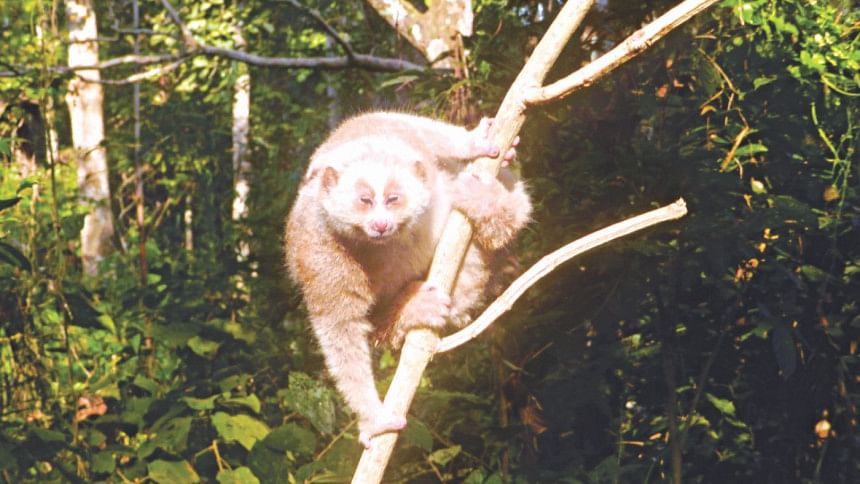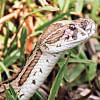Nature Quest: It's all but gone

Spider, snake and scorpion: all creatures, regardless of how attractive or appealing they are to the human eye, are worthy of conservation. If there was to be an award for the most adorable forest-dweller however, a winning candidate must be the wide-eyed and fluffy Bengal slow loris.
Inhabiting the forests of the northeast and Chittagong Hill Tracts, the slow loris is the only nocturnal primate found in Bangladesh. The shy and solitary animal is rarely seen.
"Weighing up to five kilograms and measuring a maximum of about nine inches in length, the slow loris has a very short tail of about two centimetres," says Tabibur Rahman, assistant conservator of the wildlife management and nature conservation department in Moulvibazar.
"They are omnivorous, eating vegetation, gums, fruit and nectar as well as eggs, insects and arthropods, even small reptiles and birds. The slow loris is commonly reddish brown or grey, with a distinctive white line between their eyes. Their broad hands feature an opposable thumb."
In the Lawachara National Park and adjoining forests, the slow loris is nearly extinct, Tabibur adds. Recently, deaths of at least five slow loris have been reported from various unnatural causes.
Although they are tree-dwellers, the animal is susceptible to traffic accidents. They walk across roads at night to reach new habitat and aren't as agile as their monkey cousins. Sometimes in search of food they enter settlements too, where they risk being killed by villagers.
A bigger threat is habitat loss and the associated food shortage caused. "Illegal logging in the Lawachara area occurs with the collusion of the local administration, law enforcement agencies and forestry officials," says Jabed Bhuiyan, general secretary of a local conservation group. "This deforestation is the primary cause of the food crisis faced by the slow loris."
Unfortunately, a declining slow loris population is not unique to Moulvibazar.
Satchori National Park in neighbouring Habiganj was chosen as the site for a preliminary ecological study for the Bangladesh Slow Loris Research and Conservation Project which has been running for the last two years.
"We are trying to estimate the slow loris population in the northeast," says Principal Investigator Hassan Al-Razi. "Having learnt a lot about their habits thus far, we are preparing to publish our findings in a scientific journal."
He says on several occasions the research team observed slow lorises crossing the forest floor, which is surprising for the arboreal species. "We've seen them crossing the Dhaka to Sylhet highway too, which is not a good sign," Al-Razi says.
"And the really sad news is that during our 18-month preliminary investigation, not once did we find a slow loris with an infant. We're quite confused about their breeding habits. A long-term ecological study is urgently required."
Indeed all eight species of slow loris worldwide, with habitats stretching from the Indonesian and the Philippines archipelagos to India, are understudied. Of them, the Bengal slow loris has the widest distribution. It is found from southern Thailand through Vietnam, southern China and Myanmar to its westernmost habitats in northeast India and Bangladesh.
Despite such an extensive territorial range, scientists are yet to determine even the basic characteristics such as its preferred dietary mixture between plant and animal matter.
Without a better habitat management and further research, the future of the slow loris in Bangladesh, and especially in the northeast, looks bleak. To lose such a remarkable creature, one that is not only attractive but could also win acrobatic awards for being able to hang upside down from a branch by its feet and eat with both hands at the same time, would be a national shame.


 For all latest news, follow The Daily Star's Google News channel.
For all latest news, follow The Daily Star's Google News channel. 








Comments